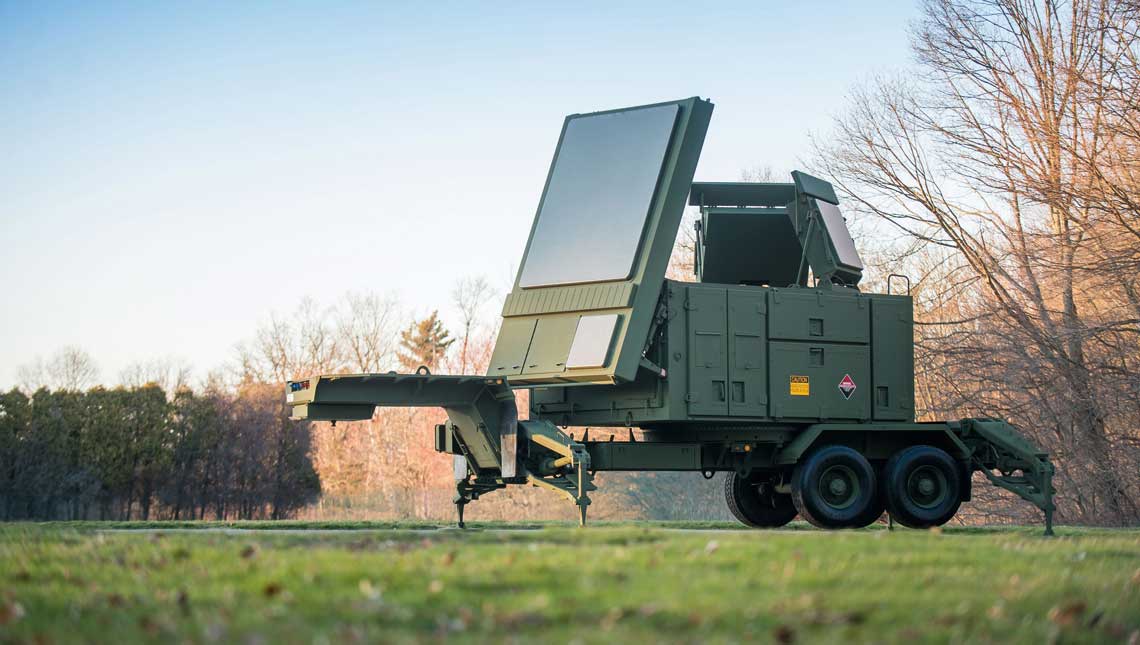Modernization of Polish air defense in 2016.

Modernization of Polish air defense in 2016 In 2016, Raytheon systematically informed about the progress of work on a new radar station with AESA antennas built using GaN technology. Raytheon is offering this radar as part of the Wisła program and also as a future LTAMDS for the US Army. Raytheon Photos
Last year, the Ministry of National Defense revised the "Plan for the technical modernization of the Polish Armed Forces for 2013-2022" prepared by the previous government. Taking into account the contracts concluded by the current leadership of the Ministry of Defense, it is clear that air defense remains one of the main areas for strengthening the combat potential of the Polish Army.
The past year has not brought any decisions on the two air defense programs that have so far caused the most emotion, namely the Vistula and the Narew. Nevertheless, in the first of them, the Ministry of Defense, by its decisions, restored real market competition. He also clearly outlined the expectations of the Polish side regarding cooperation with the industry associated with Polska Grupa Zbrojeniowa SA. In 2016, the Ministry of Defense also concluded agreements that will determine the shape of the lowest level of Polish air defense for many years to come. We also witnessed important events in the history of Polish radar.
System construction of the lower floor
From the current point of view, it is clear that the implementation of these anti-aircraft systems, which were created by the forces of Polish industry and domestic research and development institutions, is the best. Shortly before the start of 2016, on December 16, 2015, the Armaments Inspectorate of the Ministry of National Defense signed a contract with PIT-RADWAR SA for the supply of a total of 79 copies of the Poprad self-propelled anti-aircraft missile system. (SPZR) for PLN 1,0835 million. They will arrive in 2018-2022 in regiments and air defense squadrons of the Ground Forces. It is safe to say that this will be the first major increase in the capacity of these units since 1989. Moreover, it is difficult to indicate the specific type of weapon that will replace the Poprads. Rather, it fills a huge gap that has been known to exist for two decades.
Around the same time, tests of the Pilica anti-aircraft missile and artillery system (PSR-A), developed by a consortium whose technical leader is ZM Tarnów SA, were successfully completed on November 746 last year. The contract provides for the preparation of a detailed design by ZM Tarnów SA within six months. It will be assessed by a team appointed by the head of the Weapons Inspectorate of the Ministry of National Defence. If the team submits their comments on the project, they will be attached to the working draft, and then, based on this documentation, a prototype of the Pilica system will be created, which will be a model for mass production in accordance with the requirements of the military. Delivery of six batteries is scheduled for 155-165,41 years.
Both in the SPZR "Poprad" and in the PSR-A "Pilica" the main missile "effector" is the "Grom" guided missile manufactured by MESKO SA. However, taking into account the planned delivery schedule, it can be assumed that eventually both systems will fire the latest Piorun missiles. , which arose as a result of the further evolutionary development of the portable anti-aircraft missile system (PPZR) "Thunder". Moreover, the Ministry of Defense signed the first contract for the supply of portable Pioruns last year. It was signed on 20 December. For PLN 932,2 million, MESKO SA will supply 2017 launchers and 2022 rockets in the years 420-1300. According to the statement of the Ministry of National Defense, both the operational units of the Polish Army and the units of the Territorial Defense Forces that are currently being formed will receive them. Both the SPZR Poprad and PSR-A Pilica launchers are adapted to carry the new Pioruns instead of the Groms. The launch of the production of Piorun rockets is even more successful, as it is a completely Polish product created by the employees of Centrum Rozwojowo-Wdrożeniowe Telesystem-Mesko Sp. z oo and the Military Technological University. And at the same time with the highest parameters in this class of missiles in the world (fighting targets at an altitude of 10-4000 m and a range of up to 6000 m).
